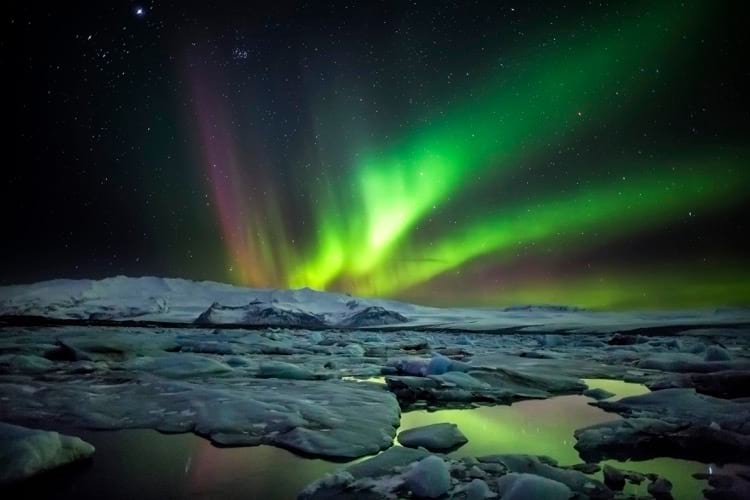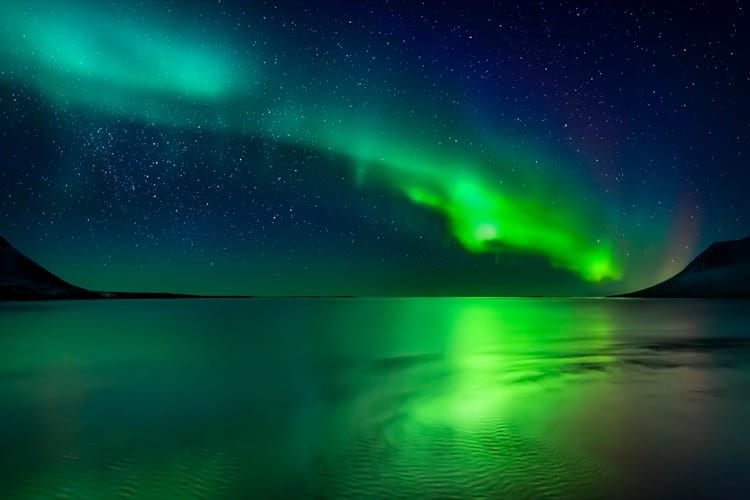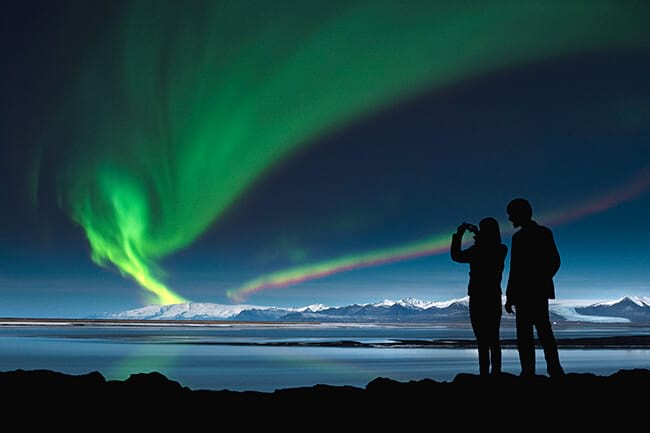Seeing the Northern Lights in Iceland: A Guide to the Spectacular Aurora Borealis
If you're seeking a truly awe-inspiring natural phenomenon, look no further than the mesmerizing Northern Lights in Iceland. These ethereal lights, also known as the Aurora Borealis, paint the night sky with vibrant colors, creating a magical spectacle that captivates all who witness it. At Gray Line Iceland, we understand the allure of the Northern Lights, and we are dedicated to making your aurora borealis dreams come true. In this comprehensive guide, we will answer all your burning questions about when, where, and how to see the Northern Lights in Iceland. So, grab your camera and prepare for an unforgettable adventure!

What are the Northern Lights?
Before diving into the logistics of seeing the Northern Lights in Iceland, let's start with a brief introduction to what they actually are. The Northern Lights, scientifically known as Aurora Borealis, are a natural light display that occurs in the polar regions of the Earth. They are caused by charged particles from the sun colliding with atoms and molecules in the Earth's atmosphere, resulting in a breathtaking display of colors. These colors can range from vibrant greens and blues to purples and pinks, creating a mesmerizing dance across the night sky.
When is the Best Time of Year to See the Northern Lights in Iceland?
To increase your chances of witnessing the Northern Lights in all their glory, it's important to plan your visit to Iceland during the optimal time of year. The prime season for Northern Lights viewing in Iceland begins in mid-August and extends until mid-April. During this period, the country experiences adequate darkness, which is crucial for observing the aurora borealis. The winter months, especially December, offer the most hours of darkness, maximizing your opportunities to see the Northern Lights. However, it's essential to note that any day within this period can provide a chance to witness this natural wonder, as long as the conditions align.
The Conditions Needed to See the Aurora Borealis
While visiting Iceland during the right time of year is important, several other factors influence your chances of seeing the Northern Lights. These include the aurora forecast, weather conditions, light pollution, and the brightness of the moon. Monitoring the local aurora forecast is crucial, as it provides valuable information about the likelihood and intensity of the Northern Lights. A Kp-index of 2 or above is promising for Northern Lights visibility. For optimal viewing, look for dark and clear skies with a positive aurora forecast. Additionally, choosing locations away from city lights reduces light pollution and enhances your chances of witnessing the aurora borealis in all its glory. Patience and luck also play a role, as the weather and solar activity can be unpredictable.
Where is the Best Place to View the Northern Lights in Iceland?
While there is no one-size-fits-all answer to this question, there are several remarkable locations in Iceland that offer excellent opportunities for viewing the Northern Lights. When in Reykjavik, some spots such as the Grotta lighthouse, Öskjuhlið forest, or Laugardalur Park may provide partial shelter from the city lights, making them viable options for witnessing the aurora. However, for the best chances of seeing the Northern Lights, it's recommended to venture outside the city and explore the stunning Icelandic countryside. From Thingvellir National Park to Snaefellsnes Peninsula, Akureyri to the Westfjords, there are countless places where you can immerse yourself in nature and experience the Northern Lights away from light pollution. Consider joining one of our expert-guided Northern Lights Tours to ensure you're taken to the most optimal locations for witnessing this celestial marvel.
Go It Alone or Get Expert Help?
While it is possible to stumble upon the Northern Lights on your own, joining a guided tour significantly increases your chances of witnessing a truly spectacular show. At Gray Line Iceland, our Tour Experts are well-versed in the art of Northern Lights hunting and are committed to providing you with the best possible experience. By enlisting their help, you'll be taken to the right place at the right time for optimal viewing. Our expert guides and drivers closely monitor sky conditions, calling upon local knowledge to select the most promising viewing locations. Additionally, our comfortable and reliable vehicles ensure a smooth journey to the best spots, allowing you to focus on the magic unfolding above you. If the conditions aren't optimal or if mother nature doesn't cooperate, you're welcome to join the tour again on another night, ensuring you have the best chance of experiencing the Northern Lights during your time in Iceland.
How to Capture a Great Photo of the Northern Lights
Seeing the Northern Lights is an unforgettable experience, and capturing that moment in a photograph allows you to relive the magic for years to come. However, photographing the Northern Lights can be challenging and requires some preparation. Whether you're using a smartphone or a camera, there are a few key tips to keep in mind. Firstly, make sure your shutter is open long enough to capture the dancing lights. Using a tripod or stabilizing your phone can help achieve this. Additionally, consider downloading a special app for your smartphone that allows you to adjust settings specifically for low-light photography. Finally, don't forget to check out our helpful guide on photographing the Northern Lights with your smartphone for more expert tips and tricks.
Happy hunting on your Northern Lights Tour in Iceland!
Now that you're armed with all the essential information about seeing the Northern Lights in Iceland, it's time to embark on your adventure. Whether you choose to explore on your own or join one of our expert-guided tours, the Aurora Borealis promises to leave you in awe of its beauty. At Gray Line Iceland, we are thrilled to be your trusted travel companion on this mesmerizing journey. Browse our website to discover a wide range of Northern Lights Tours and other exciting adventures in Iceland. Get ready to witness the dance of the Northern Lights and create memories that will last a lifetime.


